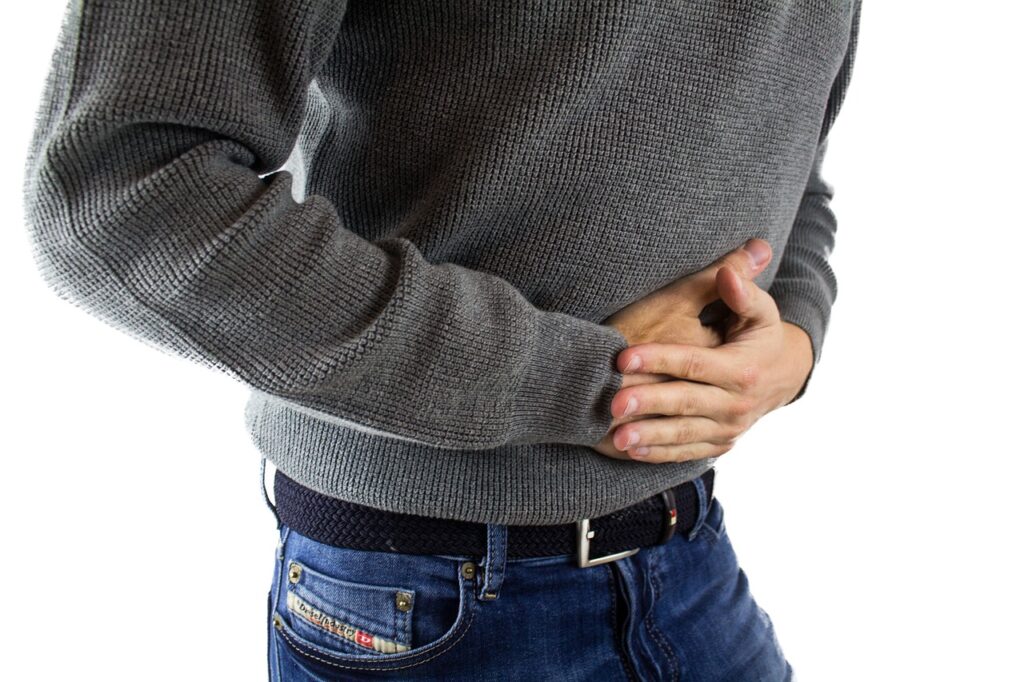In a society where individuals are increasingly disregarding their health and well-being, the prevalence of constipation has become a concerning issue.
Individuals most often eat based on what they feel like eating or financial constraints, which is too consistent to cause a change in the body system, whether good or bad.
It’s recorded that about 16 out of 100 adults have symptoms of constipation.
About 33 out of 100 adults ages 60 and older have symptoms of constipation.
In this article, we’ll be looking at how to deal with constipation, but before we delve into that let’s know what constipation entails.
What is Constipation?

Constipation is a common condition where bowel movements are painful or infrequent. Constipation is typically described as not being able to have bowel movements more than three times a week, with the stool being hard, dry, and in small amounts.
However, depending on the individual, having a bowel movement three times a day or three times a week is typical for stool removal.
Infrequent bowel movements, especially those that are difficult to evacuate, are referred to as constipation (three times a week or less, according to Rome III criteria).
A person with constipation may find it hard to pass stool and have pain, bloating, nausea, and other symptoms.
Constipation is a digestive malfunction that has symptoms that can be brought on by a variety of factors, such as inadequate amounts of fibre or liquid in the diet, particular drugs, and anatomical problems.
It is one of the most common digestive complaints in the United States.
In the US, 4 million people suffer from frequent constipation. It is the most typical gastrointestinal ailment, which accounts for 2.5 million annual doctor visits.
Types of Constipation
Some people may experience constipation as a result of dietary, lifestyle, and other factors. Constipation that is persistent or chronic, however, may be a sign of a more serious underlying illness, including an intestinal obstruction or inflammatory bowel disease (IBD).
Constipation can be acute or chronic.
Acute constipation usually lasts for a short period and is a result of lifestyle, dietary changes or use of medication, while chronic constipation is persistent. According to the aetiology, chronic constipation is often categorized as primary or secondary.
Chronic constipation can significantly affect an individual’s quality of life and may be associated with significant healthcare costs.
It is considered chronic if it is present for at least 12 weeks (in total, not necessarily consecutively) during the previous year. Chronic constipation may also be associated with psychological disturbances.
Categories of Chronic Constipation
Primary (idiopathic, functional) constipation can generally be subdivided into the following three types:
Normal-transit constipation (NTC): This is the most typical kind of primary constipation. The rate at which the stool moves through the colon is normal, yet patients have trouble passing their stools. Sometimes patients in this group fit the irritable bowel syndrome with constipation (IBS-C) criteria for constipation.
The predominance of stomach pain or discomfort in irritable bowel syndrome is the main distinction between IBS-C and chronic constipation. A typical physical examination is routinely performed on patients with NTC.
Slow-transit constipation (STC): It is characterized by infrequent bowel motions, diminished urgency, or straining to urinate. Patients who are female are affected more frequently.
Phasic colonic motor activity is diminished in STC patients. They might exhibit slight abdominal distention or sigmoid colon stool that is palpable.
Pelvic floor dysfunction (ie, pelvic floor dyssynergia): Pelvic floor dysfunction is characterized by dysfunction of the pelvic floor or anal sphincter. Patients often report prolonged or excessive straining, a feeling of incomplete evacuation, or the use of perineal or vaginal pressure during defecation to allow the passage of stool, or they may report digital evacuation of stool.
Some of the factors that can cause primary constipation include:
- Lifestyle: unhealthy eating, little exercise, and obesity
- Behavioral and psychological conditions
- Changes to the healthy gut flora and colonic dysmotility
- Genetic propensity
Secondary constipation is due to medical conditions or medications; some of the medical conditions that could cause constipation includes anal cancer, colorectal carcinoma, obstructed hernia, celiac diseases, stroke, Parkinson’s disease, multiple sclerosis, hypothyroidism, diabetes mellitus, scleroderma, while medications leading to constipation include: analgesics (opioids, NSAIDs), cation-containing medications: iron supplements, calcium supplements, antacids, antihypertensives: calcium channel blockers, beta-blockers, Bile acid resins, neurotransmitter-altering medications, antipsychotics antiparkinsonian medications, 5-HT3 receptor antagonists, anticholinergics, Antidepressants (e.g., tricyclic antidepressants) and anticonvulsants.
These are called constipation-inducing medications.
When questioned, around 50% of patients with diverticular or anorectal disease claim not to have constipation.
However, upon thorough inquiry, almost all of these patients admit to experiencing symptoms that are suggestive of defecatory straining or infrequency, mostly linked to constipation, though occasionally related to diarrhoea in patients with irritable bowel syndrome or other chronic diarrheal illnesses.
Signs and symptoms
A constipated patient may be otherwise totally asymptomatic or may complain of one or more of the following:
- stomach bloating
- Spurious diarrhoea
- Pain during urination
- A low backache
- Rectal bleeding
- Being unable to pass flatus
- Vomiting
The patient may struggle with rectal evacuation, according to the following factors as well:
- an impression of an incomplete evacuation
- electronic extraction
- Tenesmus
- Enema holding
If present, the following symptoms and indicators should raise special concern:
Rectal bleeding
It is important to note that constipation and abdominal pain are also indicators of irritable bowel syndrome.
How to deal with constipation
There are various approaches when dealing with how to deal with constipation, ranging from home remedies, lifestyle changes, and medications.
Constipation is a symptom and not necessarily a disease on its own, so it’s important to first be aware of the underlying reasons for the symptom to know how to deal with it effectively.
Constipation treatment seeks to control the amount and frequency of stools to encourage effective defecation.
Studies on both pharmaceutical and non-pharmacological therapies for constipation have been conducted to address drawbacks such as transitory and insufficient efficacy.
The first line of treatment for dealing with constipation is a non-pharmacological strategy, which involves educating the patient about the significance of lifestyle changes including diet and exercise levels.
If medical interventions are unsuccessful, laxatives, secretagogues (substances that increase secretion; examples are lubiprostone (Amitiza), linaclotide (Linzess), and plecanatide (Trulance), serotonergic agonists, and a variety of additional drugs should be administered. Surgery may be the only effective treatment for constipation if pharmaceutical measures are unsuccessful.
1. Diet and lifestyle changes
While considering how to deal with constipation, it is good to know that changes in diet and lifestyle can go a long way in dealing with constipation. These include:
Increasing your fiber intake: Consuming more fiber makes bowel movements more bulky and consistent, which makes them simpler to pass. In addition, it facilitates their quicker passage through the digestive tract. (8)
Don’t rush to increase your fiber intake at once because a sudden increase can cause bloating, so start slowly. In general, aim for 14 grams of fiber for every 1,000 calories in your daily diet.
Foods containing fiber include potatoes, beans, broccoli, dried fruits, nuts, apples, whole grains, and avocados, and for popcorn lovers; there’s one gram of fiber in every cup of popcorn, so it’s a good snack rich with fibers. (8)
2. Exercise regularly
Avoid withholding a bowel movement, don’t be quick to leave the bathroom.
Fluid intake is a key to treatment. Patients are advised to drink at least eight glasses of water daily. Counseling may be required to achieve this goal.
3. Medications
Medicines used to relieve constipation are called laxatives.
A summary of the laxatives you’ll find is:
- Stimulant laxatives the best of them include bisacodyl and genocides
- Polyethylene glycol
By luring water into the colon, polyethene glycol (MiraLax and generic) softens the faeces and stimulates the walls of the intestine to propel it along.
Many doctors and patients choose it first because of its effectiveness and safety.
The American Journal of Gastroenterology recently released an analysis of 41 over-the-counter laxative studies that revealed strong evidence that polyethene glycol effectively treats chronic constipation while having few negative effects.
It performed better than prescription laxatives, according to the analysis.
To ensure that it begins working after your breakfast the following morning, it is advised to take it after dinner. Before you notice a change in your bowel movements, it can take a few days.
4. Suppository laxatives
Fleet Glycerin Suppository and Dulcolax Medicated Laxative Suppository are two examples of suppository laxatives that often start working within an hour. They can aid with occasional constipation but aren’t meant for daily use.
Conclusion
In conclusion, surgery is typically only used to assess the underlying causes of constipation. Operative therapy for children with constipation involves colonic resection, sacral stimulation of nerves, and antegrade continence enemas.
When a patient’s constipation has an underlying psychological reason, surgical intervention should be avoided.



